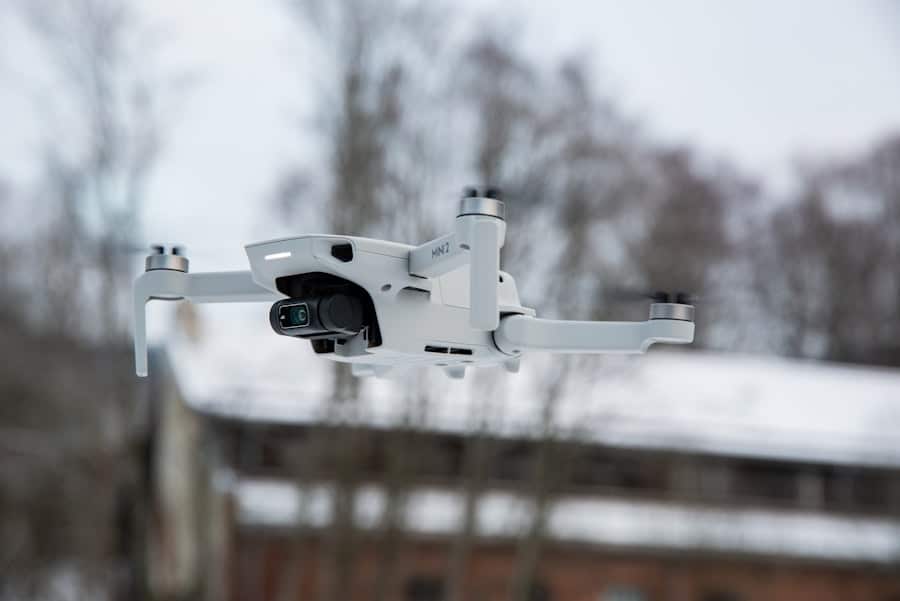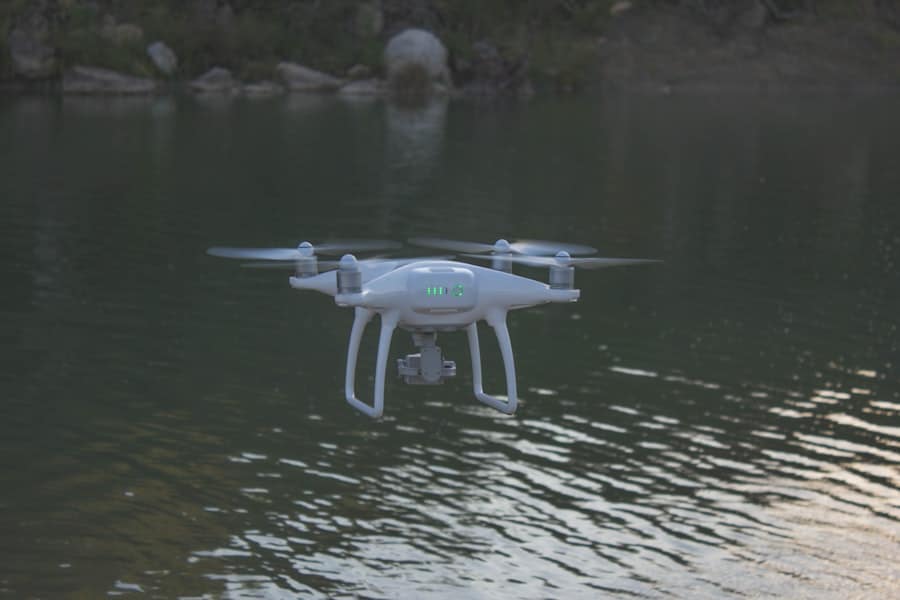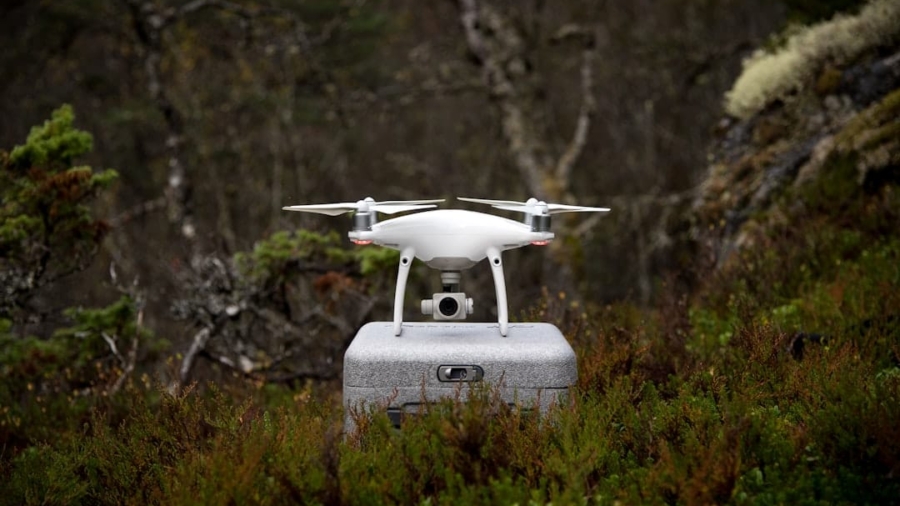The advent of 5G technology marks a significant leap forward in telecommunications, promising unprecedented data transfer speeds, reduced latency, and enhanced connectivity. In the realm of geological exploration, particularly in remote sites, the implications of 5G are profound. Traditional methods of data collection and communication in these often isolated locations have been hampered by limited bandwidth and unreliable connections.
The integration of 5G technology into geological exploration not only enhances the efficiency of data transmission but also opens new avenues for real-time analysis and decision-making. Remote geological sites, often characterized by their inaccessibility and harsh conditions, have historically posed challenges for researchers and companies alike. The deployment of 5G networks in these areas can facilitate a more robust infrastructure for data collection, enabling geologists to gather and analyze information with greater precision.
Key Takeaways
- 5G technology has the potential to revolutionize remote site geological exploration by providing faster and more reliable connectivity.
- The benefits of 5G technology in geological exploration include improved data transfer speeds, real-time monitoring, and enhanced communication capabilities.
- Challenges and limitations of implementing 5G in remote geological sites include infrastructure requirements, cost, and potential environmental impacts.
- Case studies have shown successful implementation of 5G in geological exploration, leading to increased efficiency and productivity in data collection and analysis.
- The role of 5G in advancing remote sensing and data collection is crucial for obtaining accurate and timely geological information for various applications.
Benefits of 5G Technology in Geological Exploration
One of the most significant advantages of 5G technology in geological exploration is its ability to support high-speed data transmission. This capability allows for the rapid transfer of large datasets generated by various geological instruments, such as seismic sensors, drones, and satellite imagery. For instance, a geological team utilizing drones equipped with high-resolution cameras can capture vast amounts of visual data over a remote area.
With 5G, this data can be transmitted in real-time to a central processing unit, where it can be analyzed immediately, facilitating quicker decision-making processes. Moreover, the low latency characteristic of 5G networks enhances the interactivity of remote operations. Geologists can operate equipment from afar, controlling drilling rigs or sampling devices with minimal delay.
This is particularly beneficial in hazardous environments where human presence is risky. For example, during the exploration of volcanic regions or unstable terrains, remote operation via 5G can ensure safety while still allowing for effective data collection. The ability to monitor and control equipment remotely not only increases safety but also optimizes resource allocation by allowing experts to manage multiple sites simultaneously.
Challenges and Limitations of Implementing 5G in Remote Geological Sites

Despite its numerous advantages, the implementation of 5G technology in remote geological sites is not without challenges. One primary concern is the infrastructure required to support 5G networks. Establishing the necessary base stations and antennas in remote locations can be logistically complex and costly.
Many geological exploration sites are situated in areas with difficult terrain or extreme weather conditions, which can hinder the installation and maintenance of 5G infrastructure. Additionally, the return on investment for telecommunications companies may be uncertain in sparsely populated regions where the demand for high-speed internet is low. Another significant challenge lies in the energy requirements associated with 5G technology.
The deployment of 5G networks necessitates a continuous power supply to maintain connectivity and support the high data throughput. In remote areas where access to electricity is limited or non-existent, this can pose a substantial barrier. While advancements in renewable energy sources, such as solar panels or wind turbines, offer potential solutions, the initial setup costs and ongoing maintenance can still be prohibitive for many geological exploration projects.
Case Studies of Successful Implementation of 5G in Geological Exploration
Several case studies illustrate the successful integration of 5G technology into geological exploration efforts. One notable example is the collaboration between telecommunications companies and mining firms in Australia’s remote regions. In this initiative, 5G networks were established to support real-time monitoring of mining operations.
The implementation allowed geologists to analyze geological formations and mineral deposits with unprecedented speed and accuracy. By utilizing augmented reality (AR) applications over 5G networks, teams could visualize subsurface conditions while on-site, enhancing their understanding of the geology without extensive drilling. Another compelling case study comes from the Arctic region, where researchers have employed 5G technology to study permafrost dynamics.
In this challenging environment, traditional communication methods often fail due to extreme cold and isolation. By deploying a 5G network across a research site, scientists were able to collect data from various sensors monitoring temperature changes and soil composition in real-time. This immediate access to data enabled researchers to respond quickly to environmental changes, providing critical insights into climate change impacts on permafrost stability.
The Role of 5G in Advancing Remote Sensing and Data Collection
The role of 5G technology extends beyond mere connectivity; it fundamentally enhances remote sensing capabilities essential for geological exploration. Remote sensing involves collecting data about an area from a distance, typically using satellites or aerial vehicles equipped with sensors. With the high bandwidth provided by 5G networks, vast amounts of remote sensing data can be transmitted quickly and efficiently for analysis.
For instance, satellite imagery used for geological mapping can be processed more rapidly with 5G technology. This allows geologists to identify mineral deposits or assess land use changes with greater accuracy and speed. Furthermore, integrating artificial intelligence (AI) with 5G networks can facilitate advanced data analytics, enabling predictive modeling based on real-time data inputs.
Such capabilities are invaluable for resource management and environmental monitoring, allowing for proactive measures rather than reactive responses.
Future Developments and Innovations in 5G for Geological Exploration

Looking ahead, the future developments in 5G technology promise even greater advancements for geological exploration. One area ripe for innovation is the integration of Internet of Things (IoT) devices within geological surveys. As more sensors become connected through 5G networks, geologists will have access to a wealth of real-time data from various sources, including soil moisture levels, seismic activity, and atmospheric conditions.
This interconnectedness will enhance situational awareness and improve decision-making processes. Moreover, advancements in edge computing—where data processing occurs closer to the source rather than relying solely on centralized servers—will further optimize the use of 5G in geological exploration. By processing data at the edge, geologists can receive immediate insights without waiting for data to travel back to a central location for analysis.
This capability is particularly crucial in time-sensitive situations such as monitoring natural disasters or assessing environmental hazards.
Environmental and Social Impacts of 5G in Remote Geological Sites
The deployment of 5G technology in remote geological sites carries both environmental and social implications that warrant careful consideration. On one hand, enhanced connectivity can lead to more efficient resource management and environmental monitoring practices. For example, real-time data collection can help mitigate the impacts of mining activities on local ecosystems by allowing companies to adjust operations based on immediate feedback regarding environmental conditions.
Conversely, the establishment of 5G infrastructure may disrupt local ecosystems and communities if not managed responsibly. The construction of base stations and antennas could lead to habitat destruction or alter local wildlife patterns. Additionally, there are concerns regarding the social implications of increased connectivity in remote areas.
While improved communication can benefit local communities by providing access to information and services, it may also lead to cultural shifts or economic disparities if not implemented equitably.
The Potential of 5G in Revolutionizing Remote Site Geological Exploration
The potential of 5G technology to revolutionize remote site geological exploration is immense. By facilitating high-speed data transmission and enabling real-time analysis, 5G enhances the efficiency and effectiveness of geological surveys conducted in challenging environments. While there are challenges associated with its implementation—such as infrastructure costs and energy requirements—the benefits far outweigh these obstacles when approached strategically.
As case studies demonstrate successful applications of 5G in various geological contexts, it becomes clear that this technology is not merely an enhancement but a transformative force that can reshape how geologists conduct their work. The future holds exciting possibilities as innovations continue to emerge within the realm of 5G technology, paving the way for more sustainable practices and improved understanding of our planet’s geology. The integration of advanced technologies such as IoT and AI will further amplify these benefits, ensuring that geological exploration remains at the forefront of scientific discovery in an increasingly connected world.
In addition to the advancements in remote site geological exploration with 5G technology, another interesting article on enicomp.com discusses the best software for video editing in 2023. This article provides valuable insights into the latest tools and technologies available for editing videos, which could be beneficial for professionals working in the field of geological exploration. To learn more about the best software for video editing, check out the article here.
FAQs
What is 5G technology?
5G technology is the fifth generation of mobile network technology, offering faster speeds, lower latency, and increased capacity compared to previous generations.
How is 5G technology relevant to remote site geological exploration?
5G technology can provide reliable and high-speed connectivity to remote sites, enabling real-time data transmission, remote monitoring, and control of equipment, and improved communication between field teams and headquarters.
What are the benefits of using 5G in remote site geological exploration?
Some benefits of using 5G in remote site geological exploration include improved efficiency, reduced operational costs, enhanced safety through remote monitoring, and the ability to utilize advanced technologies such as drones and autonomous vehicles.
What are the challenges of implementing 5G in remote site geological exploration?
Challenges of implementing 5G in remote site geological exploration may include the availability of 5G coverage in remote areas, the cost of infrastructure deployment, and the need for specialized equipment and expertise.
How is 5G expected to impact the future of remote site geological exploration?
5G technology is expected to revolutionize remote site geological exploration by enabling faster and more efficient data collection, analysis, and decision-making, ultimately leading to improved exploration outcomes and resource management.

